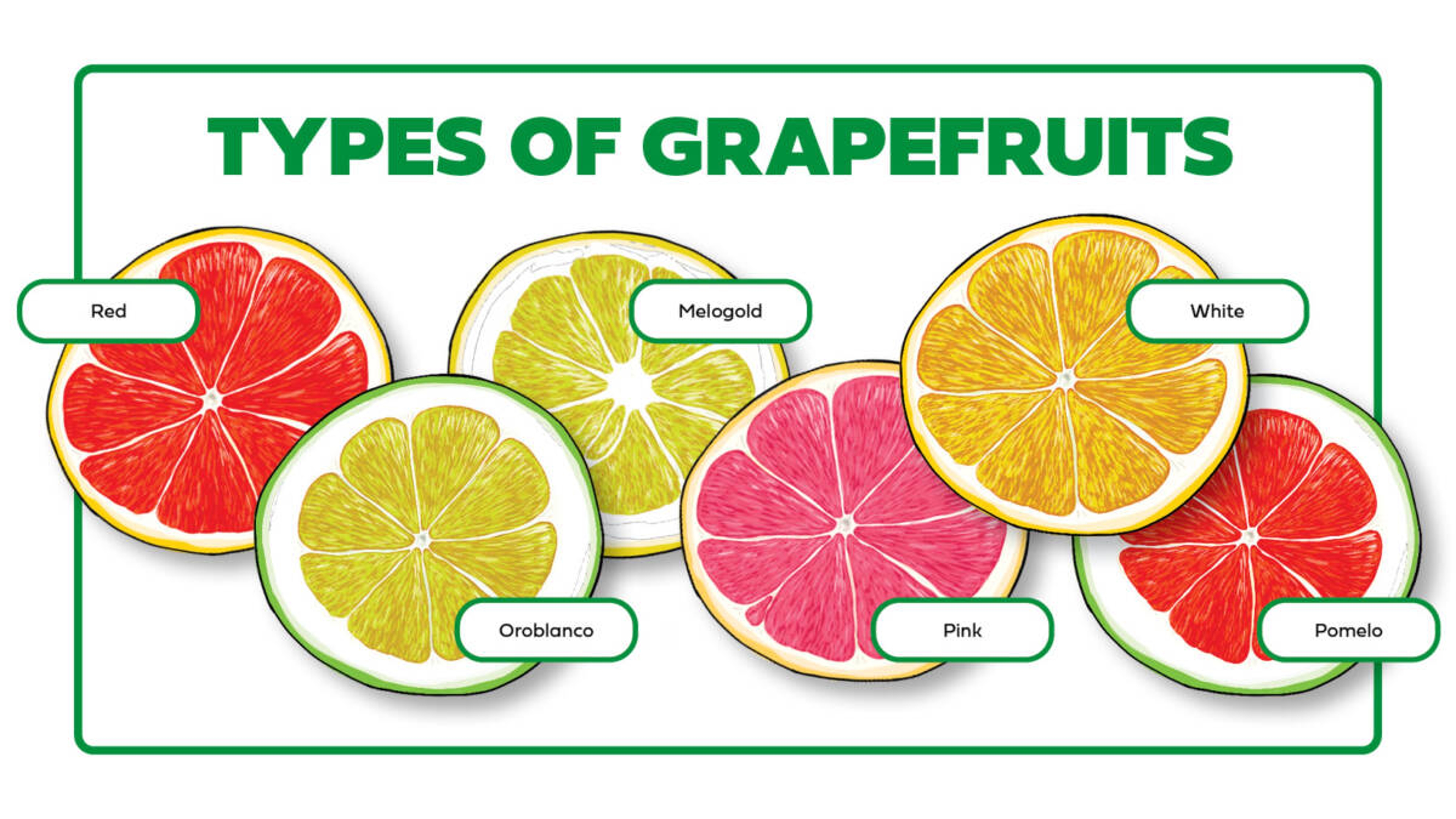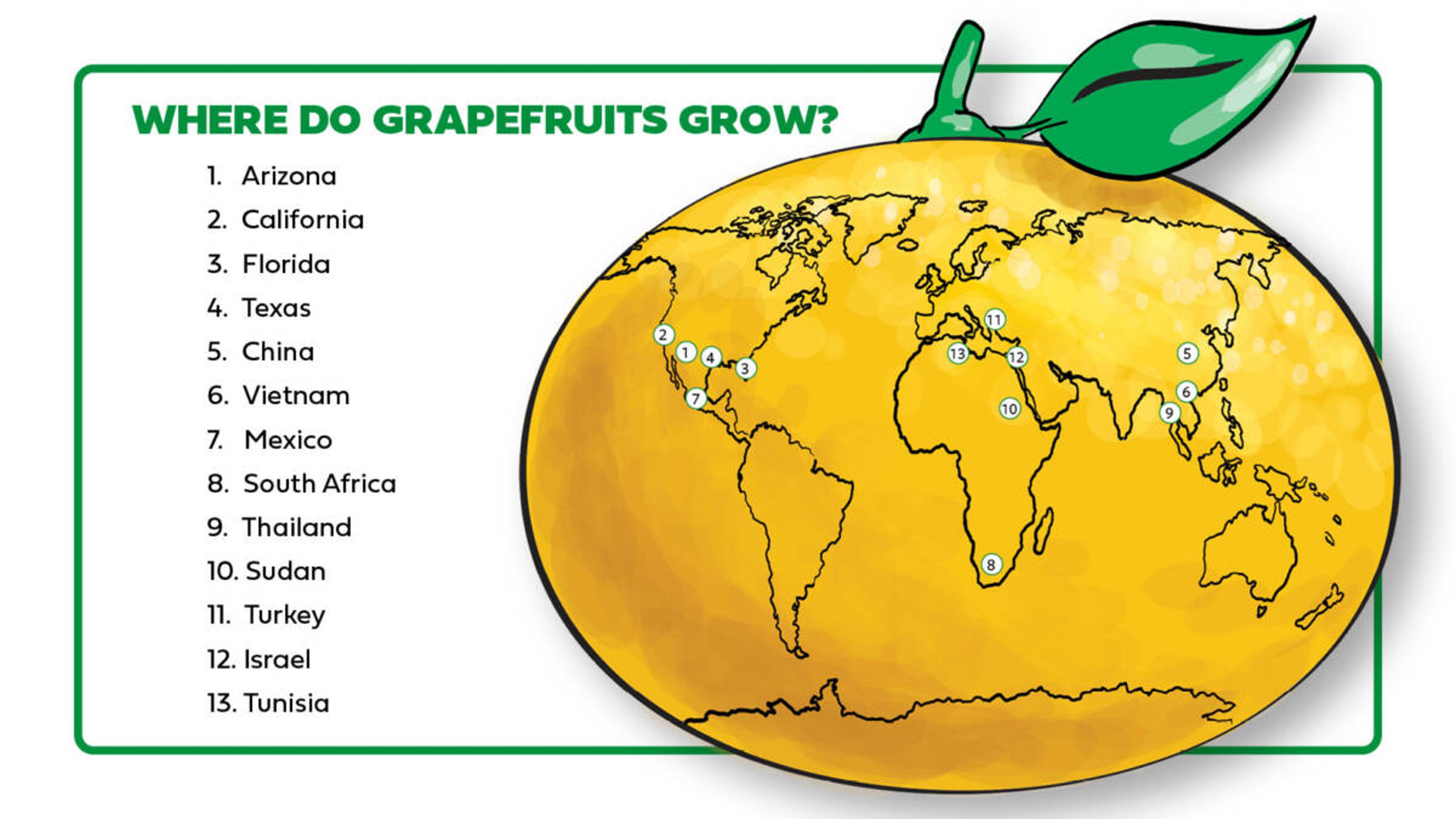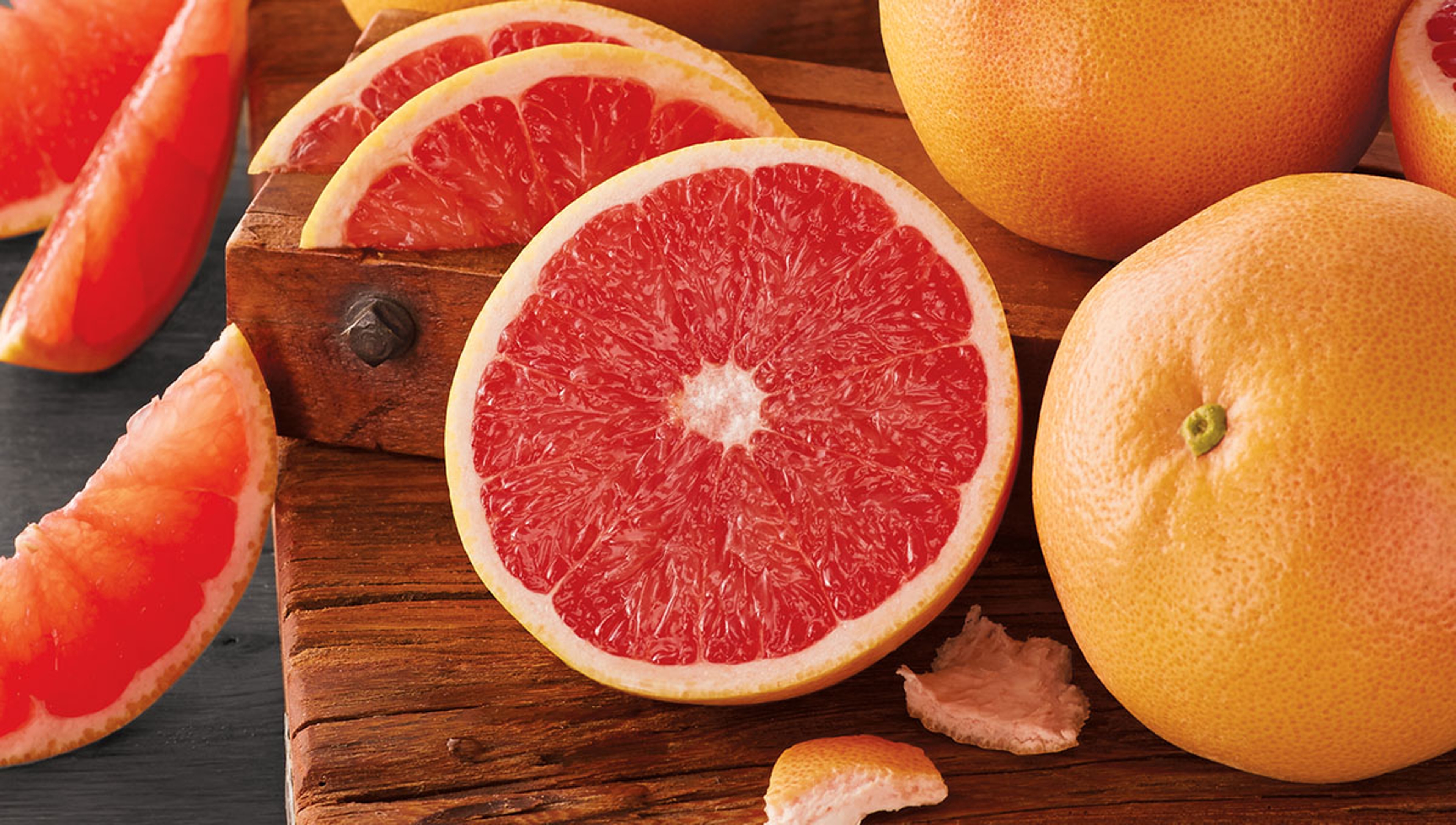A Short Guide to Grapefruits
The redder the flesh, the sweeter the juice.
Jan 07, 2025
Ah, the grapefruit (Citrus paradisi), orange's more tart, sometimes sweet cousin, and a perennial favorite in the realm of winter fruit. These tangy, softball-sized citrus fruits are a hybrid of the orange and pomelo. A relatively newish fruit, grapefruits originated in the 18th century in Barbados, but the name itself was coined by Jamaicans.
Part of the rutaceae family of fruit (think orange, lime, kumquat), grapefruits were once known as “the forbidden fruit," a moniker given to them by naturalist Griffith Hughes, perhaps because, as one story goes, it was a way for islanders to warn others about the grapefruit's terrible taste.
How did the grapefruit get its name?
Because it grows in grape-like clusters on a tree.
How many types of grapefruit are there?
More than 20. The interior flesh of a grapefruit can be white, pink, or star ruby/ruby red, and it can be either seeded or seedless. Some of the most popular types of grapefruit are Ruby Red (Indian River Ruby Red in Florida, Rio Reds from Texas), White or Yellow, Pink, Pomelo, and Melogold.

Where do grapefruits grow?
In the United States, which produces the third most grapefruits in the world, grapefruits grow in just four states: Arizona, California, Florida, and Texas; Florida grows the most of any state, around 2 million tons a year, and is the only place in the country where the white grapefruit is grown. Other countries in the top 10 are China, Vietnam, Mexico, South Africa, Thailand, Sudan, Turkey, Israel, and Tunisia.

When are grapefruits in season?
At different times of the year, depending on the varietal and location. The Florida Indian River grapefruit and Texas grapefruits are in season from early November through March. California's grapefruit season runs from January through August. Harry & David switches from Florida grapefruits to California harvests from January through early spring before ending its grapefruit sales in April. "One of the reasons we end our grapefruit sales in April is that we really prefer to only ship red and pink grapefruit," says Jane Hunts, merchandise manager for the fruit division at Harry & David. “We only ship white grapefruit if the red and pink end earlier than normal.
“We want to ensure we're in the heart of the harvest with the best quality fruit."
How to pick the perfect grapefruit
When you're at the store, don't rely just on peel color. Different grapefruit varieties can vary in color, Hunts advises. “The most important thing about the color is that it should be somewhat uniform all the way around. Make sure there are no green spots." The second rule: Perfect circles are not better. On a ripe grapefruit, both the top and bottom should be slightly flattened, making the fruit oval rather than round. Third rule: Feel the weight of it. It should feel heavier than what you are expecting for the size. A light grapefruit will not be as juicy.
How to ripen a grapefruit
Once picked, grapefruits do not further ripen, just like their citrus cousin, the orange.
How to store grapefruits

If you plan to eat it soon, store the grapefruit at room temperature; this will keep it juicier than if it were in the fridge. Keep them out of direct sunlight. Stored this way, grapefruits will last four to six days. A grapefruit stored in the refrigerator crisper can last much longer — up to six weeks! If possible, bring it to room temperature before using it. If you have already peeled, zested, or cut the fruit, put it in plastic wrap or in an airtight container and refrigerate immediately. Cut grapefruit stored this way will keep for three to four days.
Should you wash them?
Yes, always. This prevents any bacteria from getting into the flesh once sliced.
What should grapefruits taste like?
Grapefruits have a taste that is similar to that of an orange; however, they tend to be tarter than oranges and are slightly bitter. In general, the redder the flesh, the sweeter the fruit; red varieties usually have higher brix (a measure of the sugar content) than pink grapefruits, which usually have higher brix than white grapefruits, Hunts says. Most of the sourness is located in the pith — the white membrane between the segments — so if you want a sweeter grapefruit, use a knife to separate the segments from the pith. You can cut a grapefruit just like an orange.
Can you eat the peel?
Yes (which is another reason to wash it). The peel contains pectin, a prebiotic that helps the good bacteria in your gut.
Grapefruit health benefits
The grapefruit is a good source of fiber, vitamin A, and lycopene, contains more than half the day's recommended intake of vitamin C, and is chock full of flavonoids, which can help fight stroke and heart disease. While it was part of a popular diet fad dating back to the 1930s, recent studies and experts say that it doesn't have any special weight loss benefits. Certain medications have interactions with grapefruit and grapefruit juice. Talk to your doctor about any medications you are on and if it's safe to have this citrus fruit.
Delicious ways to enjoy grapefruits all day long
One of the most popular ways to eat a grapefruit is to let it get to room temperature and then slice it in half or into wedges or segment it. Grapefruit halves can also be sweetened with a sprinkling of refined or brown sugar, stevia, another artificial sweetener, or honey. You can shake on some salt to counterbalance the bitterness as well.
Grapefruit juice is a refreshing drink and is also an ingredient in many designer cocktails, not to mention the more well-known Greyhound (with gin or vodka and grapefruit juice) and The Salty Dog, a Greyhound cocktail with a salted rim.
Here are five suggestions from Hunts on how to pair a grapefruit with your meals.
- Add it to a salad, whether a fruit salad or green salad.
- Grill or blowtorch it. This caramelizes the sugars.
- Make candied grapefruit peels.
- Bake it with fish, like you would with lemon.Cook it into marmalades and jams.
.svg?q=70&width=384&auto=webp)























